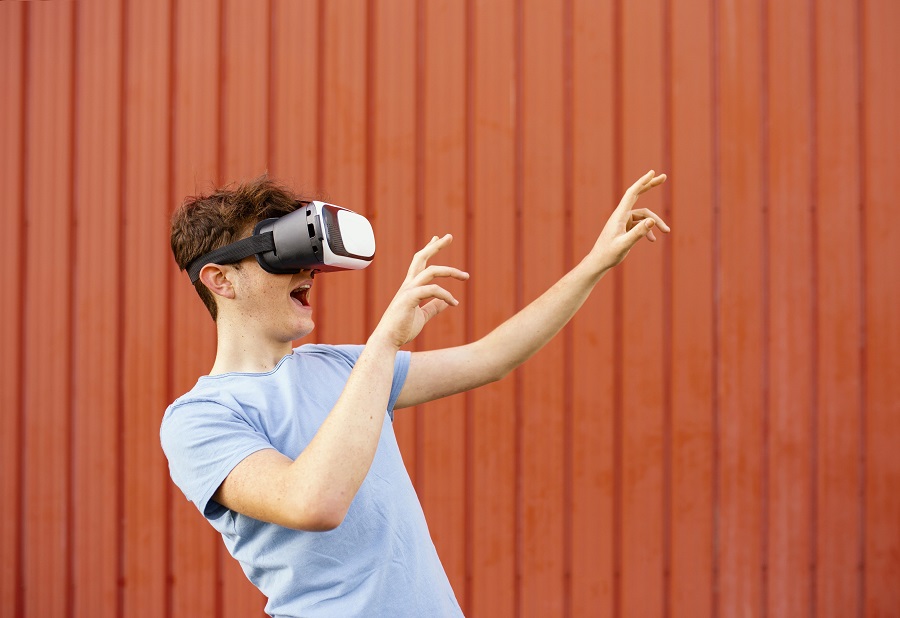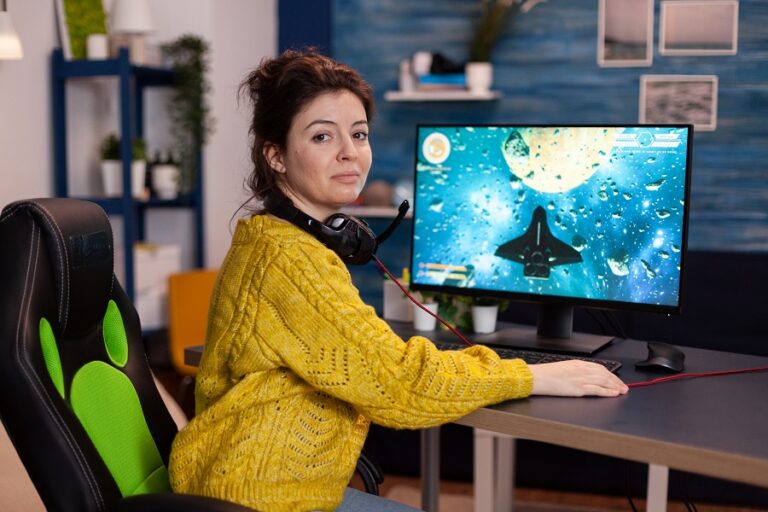Educational VR and AR Games That Make Learning Immersive
The world of education is undergoing a remarkable transformation, thanks to cutting-edge technologies like Virtual Reality (VR) and Augmented Reality (AR). These tools are reshaping how students learn by turning ordinary lessons into interactive, immersive experiences. From exploring ancient civilizations in 3D to conducting virtual science experiments, VR and AR games make learning more engaging, memorable, and impactful.
In this article, we’ll explore some of the best educational VR and AR games that are making learning truly immersive for students around the globe.
Understanding the Power of VR and AR in Education
Virtual Reality creates a completely digital environment that users can explore using a headset. It offers a 360-degree experience that makes learners feel as if they are physically present in a different world. Augmented Reality, on the other hand, overlays digital content onto the real world using devices like smartphones, tablets, or AR glasses.
Both VR and AR are especially powerful in education because they cater to visual, auditory, and kinesthetic learners. These technologies allow students to interact with their subjects in new ways, encouraging curiosity and hands-on learning.
Top Educational VR Games
- Google Expeditions VR
Google Expeditions allows students to take virtual field trips to over 900 places, from the Great Wall of China to outer space. Teachers can guide these experiences using tablets, while students wear simple VR headsets like Google Cardboard. It’s a cost-effective way to bring global exploration into the classroom and make geography, history, and science more tangible.
- Tilt Brush by Google
Although originally designed as an artistic tool, Tilt Brush has found a place in education for teaching creativity and 3D design. Students can draw in a three-dimensional space using a VR headset, helping them understand spatial awareness, geometry, and even physics concepts. It is especially useful in art, architecture, and design-related subjects.
- Titans of Space
Titans of Space is a VR tour through our solar system and beyond. It scales down astronomical distances to a manageable level so students can understand the size, position, and features of different planets and stars. The immersive nature of this experience helps make abstract space science concepts easier to grasp.
- Unimersiv
Unimersiv offers educational VR content on topics like anatomy, ancient history, and space exploration. For example, students can explore the human body in 3D or walk through ancient Rome. These highly detailed environments help learners retain information more effectively by combining visuals with interactive elements.
- Anne Frank House VR
This powerful VR experience lets students step inside the secret annex where Anne Frank hid during World War II. It combines history, empathy, and storytelling in an unforgettable way. Rather than reading about the Holocaust in a textbook, students can see and feel what it was like to live in hiding, deepening their understanding of historical events.
Top Educational AR Games
- Merge Cube
Merge Cube is a handheld cube that students can use with a smartphone or tablet to view holograms in 3D. With compatible apps, students can explore anatomy, examine fossils, or conduct science experiments in augmented reality. It’s portable, affordable, and brings lessons to life right in students’ hands.
- QuiverVision
QuiverVision takes coloring to a whole new level. Students color paper worksheets and then use a mobile app to see their artwork come alive in 3D. It’s especially useful for younger students, combining creativity with interactive learning in subjects like animals, geography, and biology.
- AR Flashcards
AR Flashcards turn traditional flashcards into 3D learning tools. When viewed through a smartphone or tablet, the flashcards display interactive animals, letters, or objects that move and make sounds. This boosts early literacy, language skills, and recognition abilities in preschool and kindergarten students.
- JigSpace
JigSpace allows students to explore how things work through interactive 3D models. From engines to human organs, students can examine and manipulate virtual objects to learn their structure and function. It is especially effective in science and engineering education, promoting inquiry and problem-solving.
- Mondly AR
Mondly AR offers an engaging way to learn new languages using augmented reality. With the help of a virtual teacher, students can practice vocabulary and sentence structure in real-life scenarios. The app uses speech recognition and immersive scenes to enhance language retention and pronunciation.
Why Immersive Learning Works
VR and AR games make education more experiential. Students don’t just read or listen—they do. This hands-on involvement increases knowledge retention and improves understanding of complex topics. Some key benefits of immersive educational games include:
- Enhanced engagement and motivation
- Better retention of information through interactive experiences
- Improved spatial and critical thinking skills
- Accessibility to places and scenarios that are otherwise unreachable
- Opportunities for self-paced and personalized learning
The Future of Immersive Learning
As VR and AR technologies become more affordable and widespread, more schools are incorporating them into their curriculum. Many developers are also focusing on creating inclusive, curriculum-aligned content that supports educational standards. Teachers are finding that these tools not only make lessons more fun but also improve academic outcomes.
Moreover, immersive learning prepares students for future careers in technology, engineering, medicine, and other industries where 3D modeling, simulation, and problem-solving are essential.
Getting Started with VR and AR in Education
Parents and educators don’t need expensive gear to begin. Many VR and AR apps work with smartphones and basic headsets. Platforms like YouTube VR, Google Expeditions, and Merge EDU offer free or low-cost access to immersive experiences. Schools can also apply for grants or partnerships to fund more advanced equipment like Oculus Quest or Microsoft HoloLens.
Conclusion
Educational VR and AR games are revolutionizing how children learn by making education immersive, interactive, and enjoyable. These technologies are more than just trends—they represent the future of learning. By integrating VR and AR into classrooms and homes, we can give students a richer, deeper understanding of their subjects and inspire a lifelong love of learning.
From exploring the stars to diving into the human body, the possibilities with immersive educational games are endless. It’s time to embrace the future and make learning an adventure that students will never forget.






